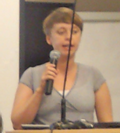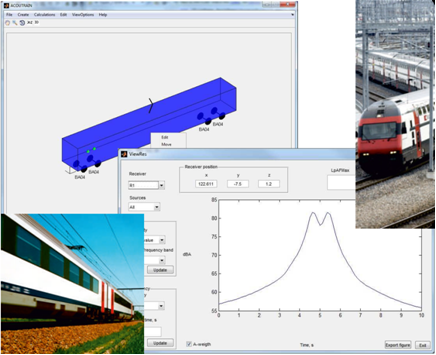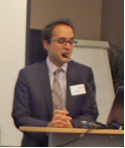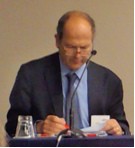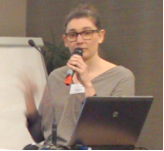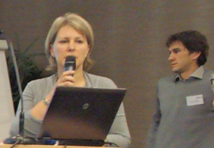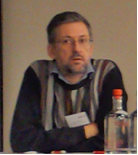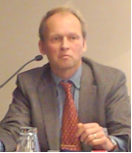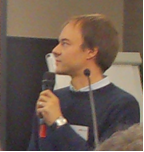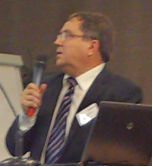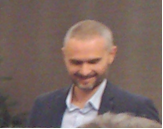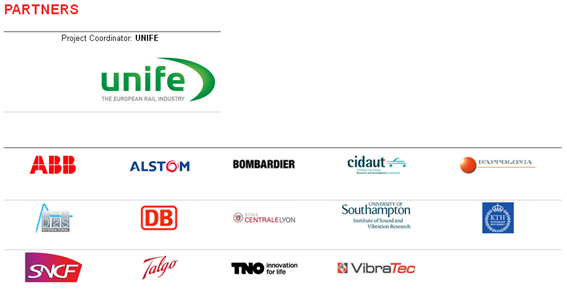Brussels (Belgium), 7 November 2014
The project ACOUTRAIN has come to its end, and its final event was held last November in Brussels, organised by UNIFE.
About 50 railway experts participated in the event, gathering a broad set of expertise in different knowledge fields like rolling stock manufacturers, testing laboratories, notified bodies for rolling stock homologation and representatives of the European Railway Agency.
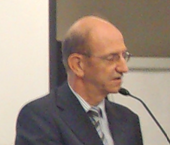 |
|
Nicolas Furio, Administrative Project coordinator, UNIFE |
Jean-Marie Bodson, Technical Director Standards & Regulations |
Philippe Citroën Director-General of UNIFE |
The main results of ACOUTRAIN were presented during the full day event, structured in 5 main sections:
- Session 1 – Basic tools for virtual certification.
Estelle Bongini from SCNF (technical project coordinator) started presenting an introduction to concepts of Virtual Testing developed in the project, establishing the initial framework to facilitate the understanding of the work carried out. In particular she gave a detailed description of the flowchart defined for the selection of the most appropriated virtual testing approach to use depending on the developed virtual vehicle. Afterwards Nathalie Cuny from Alstom and Giacomo Squicciarini from ISVR presented the software tool developed in the project, which name is the same as the project, and gave a quick in-site life demo on how to set up virtual vehicles with the new tool. Then they explained the work carried out for certification of the simulation tool, which can be applicable and extended to other simulation tools aiming to be used in the virtual testing framework.
|
Estelle Bongini, Technical project coordinator |
Nathalie Cuny, WP4 leader, and Giacomo Squicciarini |
- Session 2 – Noise sources characterisation
David Thompson from ISVR gave indications on how to use the software tool TWINS, in particular with regards to wheel roughness, for which a dedicated study was developed to evaluate existing test methods. Ulf Orrenius from Bombardier reported about tests methods used to characterise individual noise sources of vehicles, like HVAC, motors, transformers… and eventually Benjamin Betgen from Vibratech described the research related to integration effects of noise sources and how existing calculation methods can represent it.
|
David Thompson, WP2 leader |
Ulf Orrenius, WP3 leader |
Benjamin Betgen |
- Session 3 – Methods related to virtual certification
Transposition and separation procedures to separate rolling stock and track contributions to noise emission prediction were introduced by Michael Dittrich from TNO. Estelle Bongini clarified differences between the virtual testing approach and the simplified method in the Noise TSI. Application of virtual testing results for the evaluation of noise emission from railway infrastructures in the framework of the European Noise Directive was also studied.
|
Michael Dittrich |
- Session 4 – Example application: NAT Case study
The extensive measurement campaign carried out during the second year was presented by Maria Starnberg from Deutsche Bahn. Andre Bistagnino from Alstom described the modelling concept behind setting up virtual vehicles for virtual testing, for which the NAT train was taken as reference.
|
Maria Starnberg, WP5 leader |
Andrea Bistagnino |
- Session 5 – Virtual testing within certification
Estelle Bongini and Maria Starnberg took the floor to describe one of the main project outcomes, the alternative procedures or approaches for virtual testing implementation, namely hybrid approach and extension of approval.
An interesting debate took place between presenters and the audience after each session, and input was given from the industry, notified bodies and ERA.
